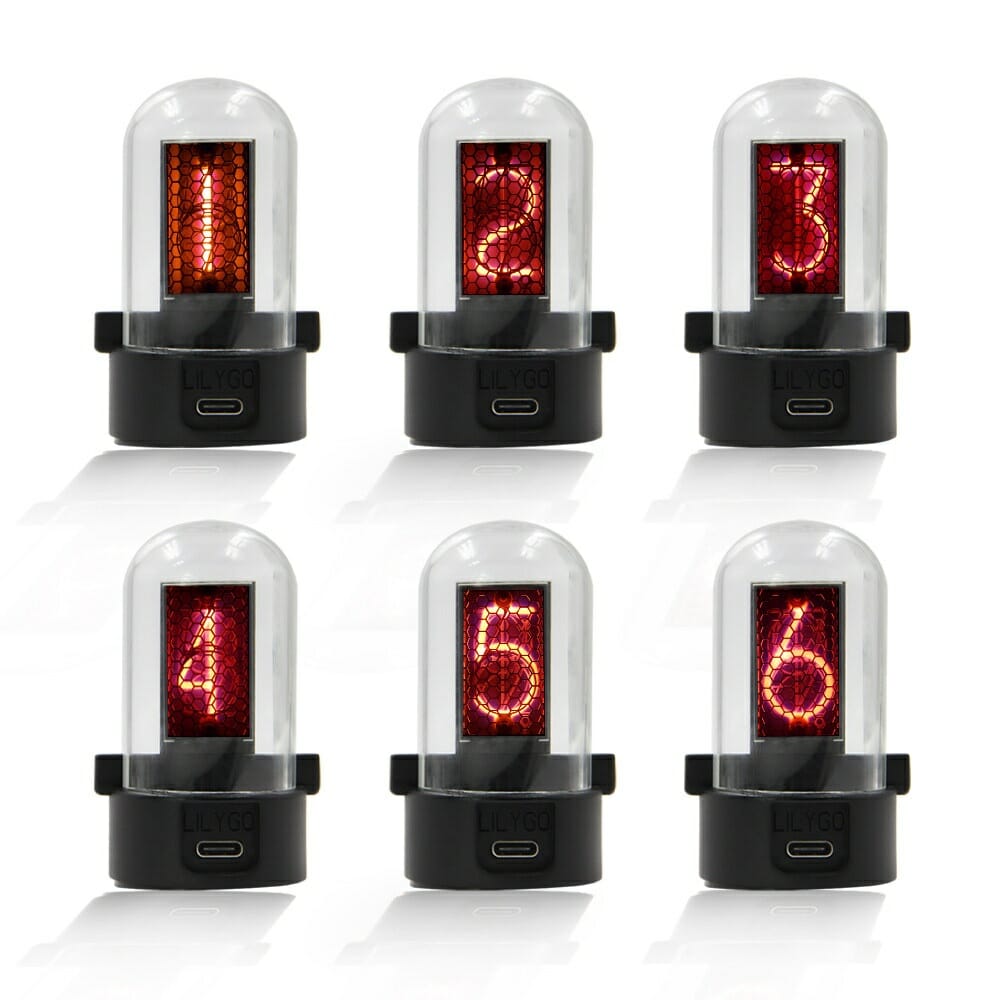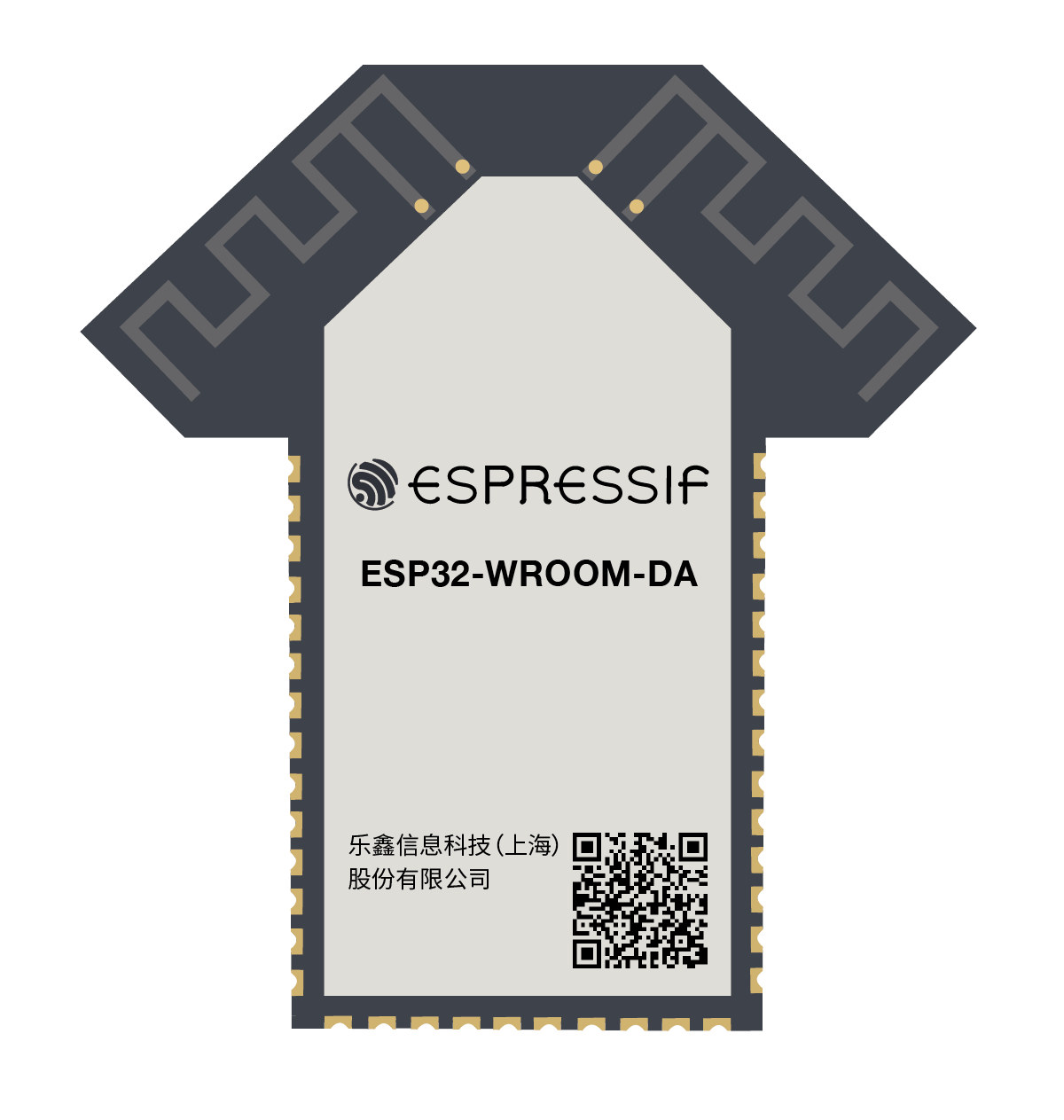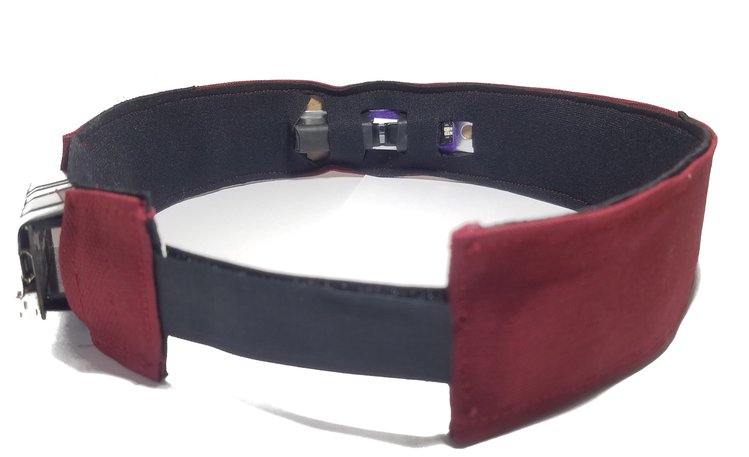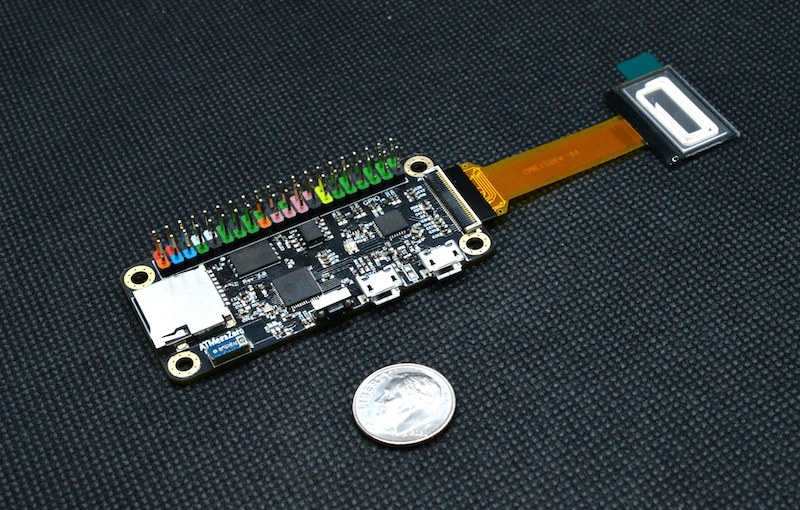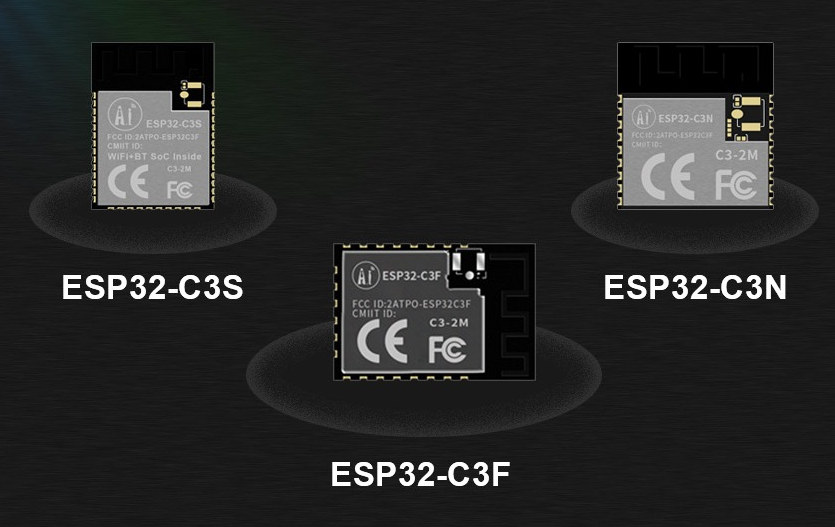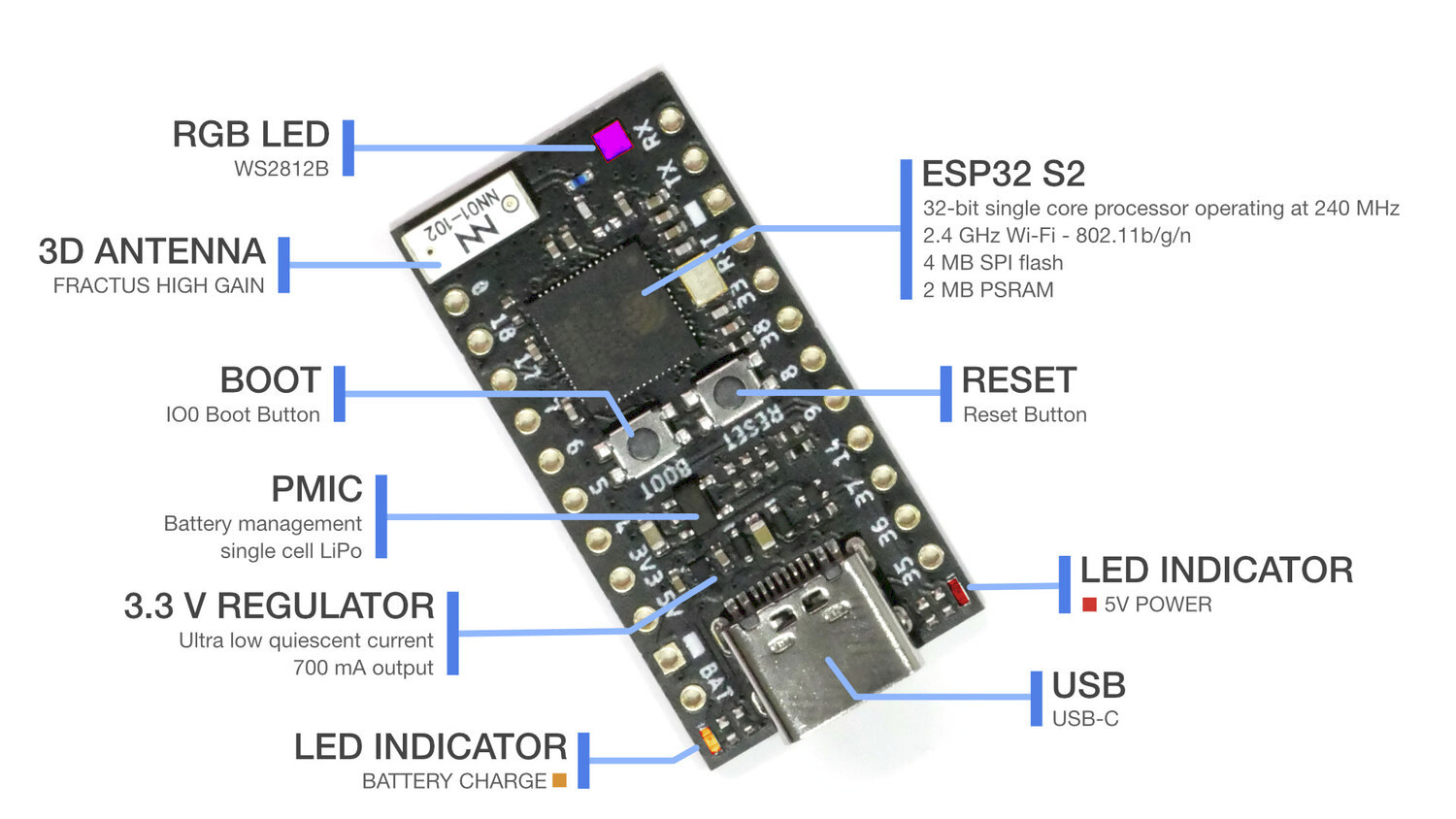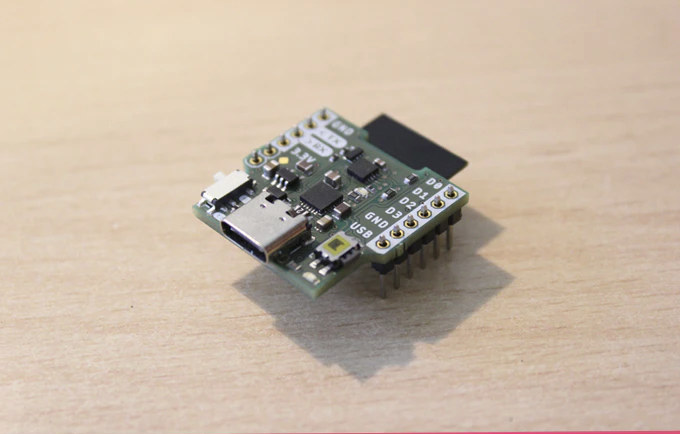I tend to see Nixie Tube projects regularly as I spend my days going through the news, and the projects, usually some sort of clock, typically look pretty neat. But although Nixie Tubes can still be purchased online, they are not mass-produced anymore, which may explain why LilyGo decided to create a “fake” Nixie Tube, or let’s call it a lookalike, with T-Nixie Tube that comes with an IPS LCD display driven by an ESP32 WiFi & Bluetooth WiSoC. T-Nixie Tube specifications: Wireless Module – TTGO T-Micro32 module with ESP32 V3 Bluetooth and WiFi processor, 4MB Flash Display – 1.14-inch IPS LCD display covered by glass tube USB – USB Type-C port for power and programming Expansion – 4-pin I2C/UART Grove? connector for T-WATCH sensor kit or T-FH interface sensor modules Misc – PCF8563 RTC, IR receiver, TTP223 touch button, Reset button Power Supply – 5V via USB-C port Dimensions […]
ESP32-WROOM-DA dual PCB antenna WiFi module aims for longer range, better reliability
Espressif Systems ESP32-WROOM-DA is another ESP32 based WiFI & BLE module with a twist as its dual PCB antenna design aims to provides a longer range and more reliable connectivity by automatically switching to a specific PCB antenna depending on signal strength. The new module features ESP32-D0WD-V3 dual-core Xtensa LX6 dual-core processor with a maximum frequency of 240 MHz, along with 520 KB of SRAM and 448 KB of ROM, and has been designed to be pin-to-pin compatible with ESP32-WROOM-32E module found in products such as Pico Wireless, in order to ease migration between the two modules. Espressif did not provide detailed specifications for the new WiFi module, but assuming it’s mostly based on ESP32-WROOM-32E design, ESP32-WROOM-DA should have the following key features & specifications: WiSoC – Espressif Systems ESP32-D0WD-V3 embedded, Xtensa dual-core 32-bit LX6 microprocessor, up to 240 MHz with 448 KB ROM for booting and core functions, 520 […]
HEGduino V2 supports fNIRS and Blood-Flow Monitoring (Crowdfunding)
AlasKit has launched a crowdfunding campaign on Crowd Supply for HEGduino V2. The device features noninvasive optical imaging through fNIRS (Functional near-infrared spectroscopy), apart from its brain blood flow monitoring functionality. We saw the previous version of the HEGduino in September 2019 which only supported blood flow monitoring. But the HEGduino V2 also monitors breathing, heart rate, and skin temperature. HEGduino V2 has a MAX86141 optical pulse oximeter cum heart-rate sensor for incorporating Heart Rate Variability (HRV) training. It also allows breath and skin temperature monitoring. The sensor has a specification of 2×4096 SPS sensing with a 19-bit resolution which is a bit higher than its previous version. As HEGduino V1 had an 860 SPS sensing with a 16-bit resolution. However, the practical application observes even lesser values for HEGduino V1. Setup of HEGduino V2 The device also comes with an ESP32 breakout board with rechargeable battery support. The board […]
The Zigbee Alliance renames to the Connectivity Standards Alliance (CSA), Project CHIP becomes “Matter”
The Zigbee Alliance is/was an organization of hundreds of companies creating, maintaining, and delivering open standards for Zigbee… and other Internet of Things (IoT) standards including Smart Energy, Green Power, JupiterMesh, rf4ce, Dotdot, etc… Since the organization does not reflect its involvement beyond Zigbee, the name has just been changed to the Connectivity Standards Alliance (CSA), and while they were at it they also rebranded “Project CHIP” (Connected Home over IP) to “Matter”, maybe because “connectivity standards matter!” 😉 There’s also a new website csa-iot.org but it may not have complete information just yet, and they invite you to access the Full website (https://zigbeealliance.org/about/) for extra details. Nothing much has changed here besides the name. But there’s more to report about Matter. A dedicated website has launched for the new standard, although the code remains under the Project Chip GitHub account at this time. What’s more interesting is that formal […]
ATMegaZero ESP32-S2 board supports OLED displays
EspinalLab ATMegaZero board was introduced last year with Raspberry Pi Zero form factor, the Arduino Leonardo compatible, 16 MHz Microchip ATmega32U4 microcontroller, and a connector for an optional OLED display. The company is now back with an update following the same form factor with ATMegaZero ESP32-S2 board equipped with a more powerful ESP32-S2 single-core processor @ 240 MHz with WiFi connectivity, and most of the same features, including OLED display support, plus a micro USB OTG port and an RGD LED. ATMegaZero ESP32-S2 board specifications: WiSoC – Espressif Systems ESP32-S2 single-core processor @ 240 MHz with WiFi RAM – 8MB PSRAM Storage MicroSD card 256Mbit (32MB) SPI Flash (note: only 16MB can be used for now due to firmware limitations) Display – 32-pin OLED display port compatible with 30-pin SSD1306 and SH1106 based displays Wireless Connectivity – 2.4 GHz WiFi 4 up to 150 MHz with 3D antenna USB – […]
AI-Thinker introduces 5 ESP32-C3 modules pin compatible with ESP8266 & ESP32 modules
ESP32-C3 is the first RISC-V wireless SoC from Espressif Systems, and at the time of the initial announcement promised to cost about the same as ESP8266 but adds support for Bluetooth 5.0 LE besides 2.4 GHz WiFi, and retain software compatibility through the ESP-IDF framework. We were also told the goal was to provide ESP8266 compatible modules, and AI-Thinker has just announced five new ESP32-C3 modules compatible with earlier ESP8266 & ESP32 modules as shown in the table below. The table above is quite low resolution but that’s the best I could obtain from the company… It’s also a complete mess, not showing all alternative ESP8266 or mistaken in board sizes. So I’ll try to give a short summary of differentiating features and equivalent ESP8266/ESP32 modules: ESP32-C3F is meant to replace ESP-12F with a 24 x 16 mm form factor. It does add an IPEX connector, besides the PCB antenna. […]
TinyS2 ESP32-S2 board is designed for battery operation
Unexpected Maker has launched a follow-up to the ESP32 based TinyPICO board with TinyS2 board equipped with an ESP32-S2 WiFi processor featuring 4MB flash and 2MP embedded PSRAM. The new board is still designed with a LiPo battery charging circuit, comes with an onboard RGB LED, and while it is compatible with TinyPICO form factor, it has become a little longer with a 41 x 17.8mm footprint to accommodate for extra I/Os. TinyS2 specifications: WiSoC – Espressif Systems ESP32-S2FN4R2 single-core processor @ 240 MHz with 4MP SPI flash, 2MP PSRAM Connectivity – 2.4 GHz 802.11b/g/n WiFi 4 plus 3D antenna USB – 1x USB Type-C port for power and programming Expansion – 12 + 11-pin headers for up to 17x GPIOs, SPI, I2C, UART, ADC, DAC, 5V, 3.3V and BAT signals Misc – Boot and Reset buttons, battery charging status LED, power LED, user-programmable RGB LED that can be shut […]
The Axon platform offers WiFi & LoRa IoT messaging in a compact form factor (Crowdfunding)
Qortex (Amine Mehdi Mansouri) has developed the WiFi & LoRa IoT messaging platform to allow devices to communicate wirelessly via serial messages. The solution also includes a wireless serial port and 4 digital outputs. The tiny Axon board is based on ESP8266 WiFi SoC and can be augmented with a LoRa module for a longer range, and the solution integrates with the Axon cloud for data visualization in the cloud. There’s also a HAT expansion board for Raspberry Pi compatibility. Axon board specifications: Wireless module – ESP12-S ESP8266 2.4 GHz WiFi 4 module USB – USB Type-C port for power and programming via CP2102 Expansion – 2x 6-pin header with GPIOs, UART, 5V, 3.3V, and GND Misc – Status LED, Reset button, USB/MCU (UART) selection switch Power Supply 5V input via USB-C port 3.3V/600mA LDO PTC fuse, reverse polarity protection, ESD protection Dimensions – 30 x 25 mm The board […]


